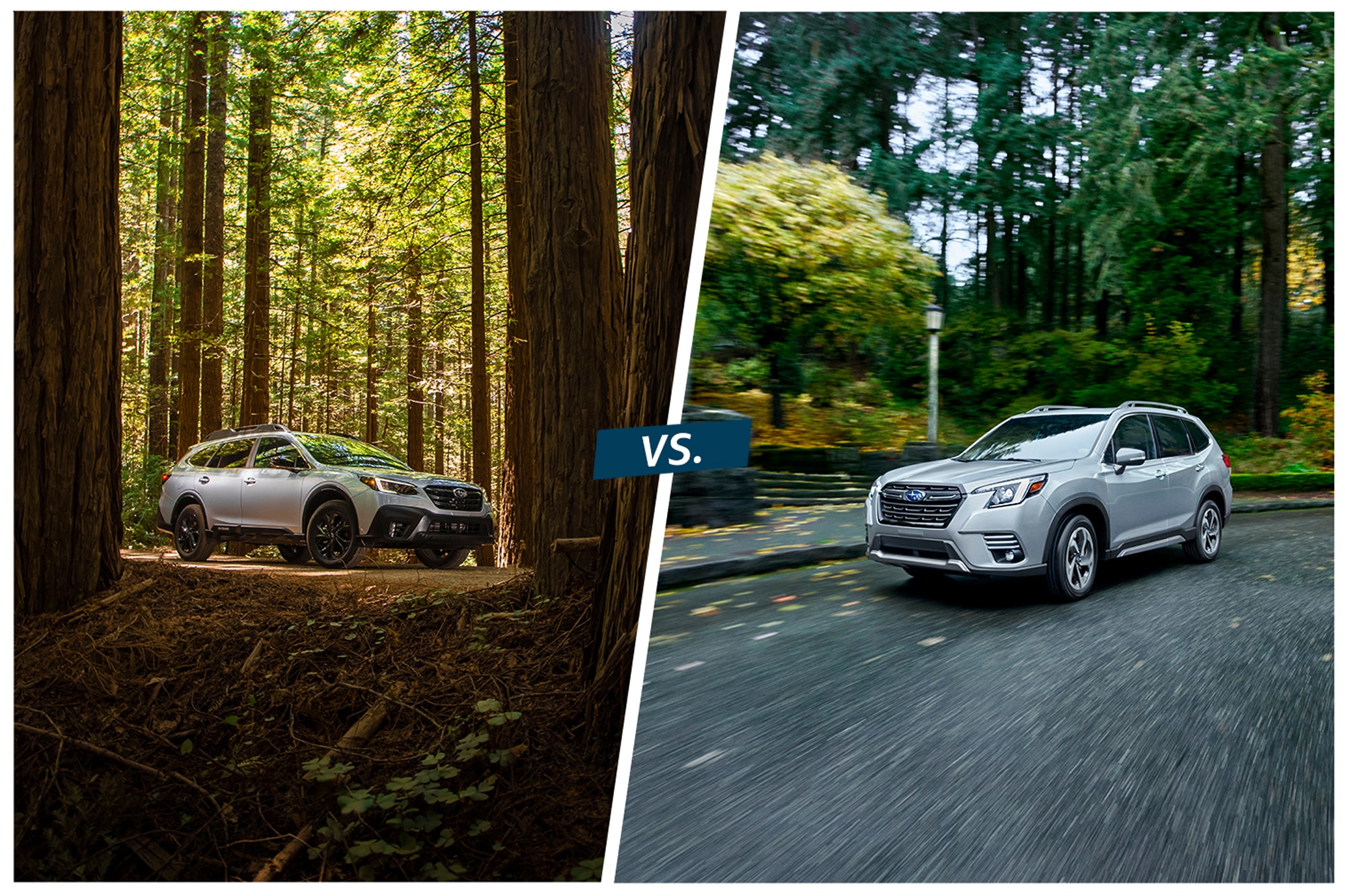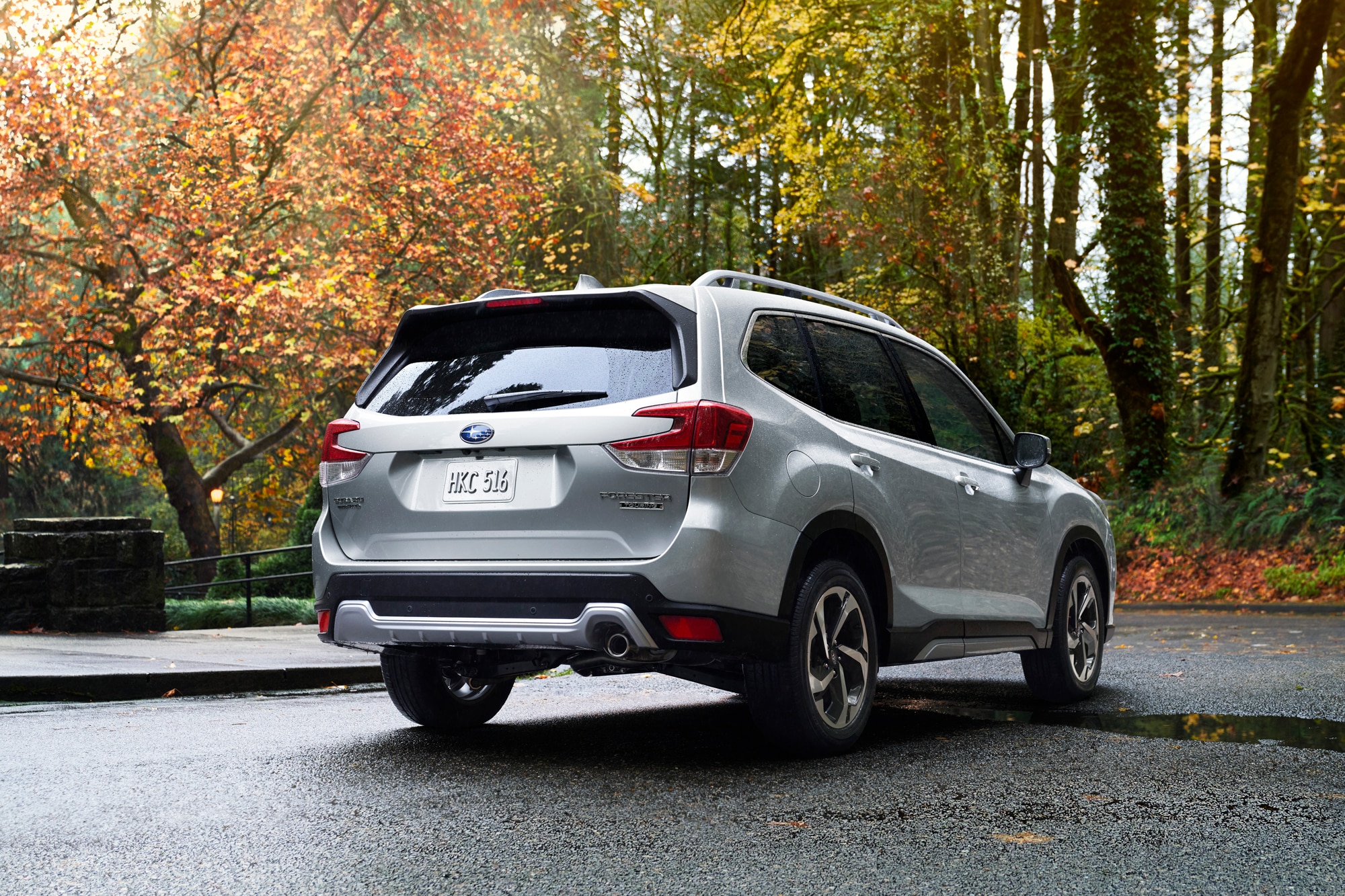2022 Subaru Outback vs. 2022 Subaru Forester: Price, Fuel Economy, and Features Compared
With its overlapping lineup, Subaru has an SUV (or two) to suit every shopper’s needs.
 Subaru Outback/Forester
Subaru Outback/Forester
QuickTakes:
Trying to capitalize on America’s love of crossovers, many automakers saturate their lineups with largely redundant models, spawning some intrabrand rivalry. That’s evident over at Subaru, where the Outback and Forester compact SUVs compete for the same customers. Here’s a look at how these two five-seat models (barely) differ.
 Subaru Forester
Subaru Forester
Price
Subaru advertises both the Forester and Outback as two-row SUVs, even though the latter is more of a station wagon with a lift kit than a crossover. In the realm of pricing, the Forester has a slight edge, starting at $26,370. The Outback opens at $28,120, but it compensates for the $1,750 difference with standard hill-descent control and the brand’s X-Mode traction aid, plus a two-screen infotainment system, a larger fuel tank, more cupholders, and greater towing capacity. From there, Subaru gives buyers plenty of options, with six trim levels for the Forester (topping out with the $36,470 Touring model) and eight for the Outback (culminating with the $41,120 Touring XL).
 Subaru Outback
Subaru Outback
Features
Subaru provides much of the same kit on both models, including standard all-wheel drive, the brand’s EyeSight driver-assistance features, and LED headlights. The two vehicles even offer the same 8.7 inches of ground clearance (except in Wilderness trim, where the Outback rides 9.5 inches above the road, and the Forester, 9.2).
The Forester has a higher roof than the Outback, which gives front and rear occupants superior headroom and makes loading up the back easier. That said, the wagon provides more cargo space. Outback buyers can also get ventilated front seats, something no Forester offers.
 Subaru Forester
Subaru Forester
Fuel Economy
The base Forester and Outback use the same 182-horsepower 2.5-liter four-cylinder engine and share the same 26-mpg city and 33-mpg highway fuel-economy ratings. Pick an Outback Onyx Edition XT or better and you’ll get a 260-hp turbocharged 2.4L four. It’s a popular choice among performance-focused buyers and propels the wagon to 23 mpg in the city and 30 mpg on the freeway. Subaru also offers a rugged-looking, high-riding Wilderness model in both lineups, but while the Forester example sticks with the 2.5L and sees 25 mpg city and 28 mpg highway, the Outback version uses the turbo engine and performs a little worse on the Environmental Protection Agency’s cycles, with 22 mpg city and 26 highway.
Written by humans.
Edited by humans.
 Carl Malek
Carl MalekCarl Malek is an automotive journalist with more than 10 years of professional experience. He covers all aspects of the automobile industry but specializes in vehicle reviews and industry analysis with strong knowledge in both fields. When he is not writing, he enjoys spending quality time with his wife Emily and being involved in other family activities.
Related articles
View more related articles